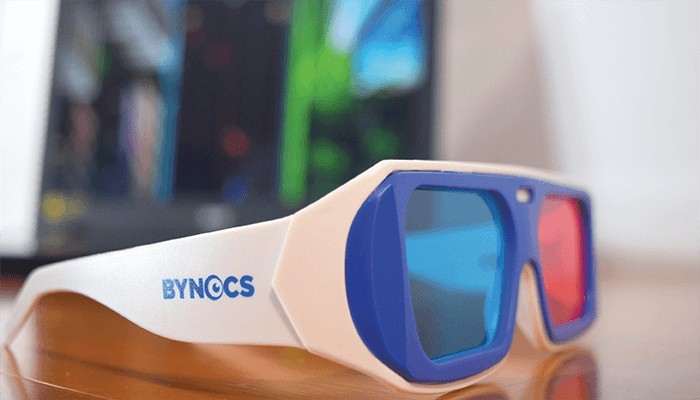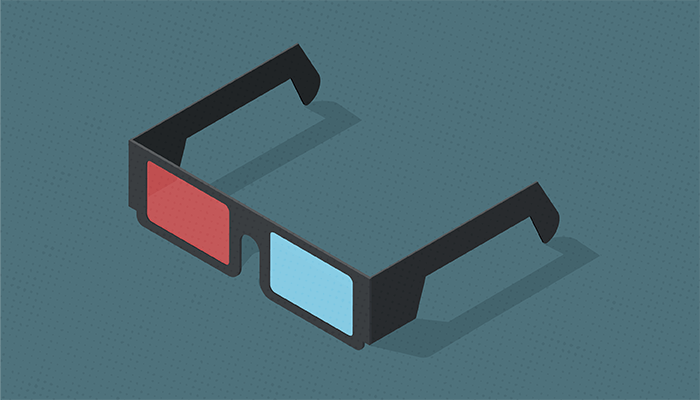
Amblyopia is far from uncommon. Despite estimates suggesting that one in 50 children will develop the condition, there is a dearth of treatment options. It seems strange that patching (which is most effective before the age of six) is still the gold standard treatment for amblyopia – especially given the lack of guaranteed positive outcomes, the low compliance (which can be the result of bullying; school kids are not known for their tolerance), and the inherent difficulties associated with covering the child’s only healthy eye for a period of at least four months but up to 24 months.
I completely understand why patching is currently a preferred option for some – it does work in some cases, and it has been the only option for a long time. But preventing a child from seeing out of their one healthy eye for a sustained period of time doesn’t make sense to me. It feels like giving crutches to someone with a broken leg, but asking them to rely only on the bad leg…
The clear issues with patching drove my team to a search for a non-patching solution! When we realized that binocularity affects different parts of the brain compared with monocular vision – and that this plasticity lasts for life – we decided to explore dichoptic binocular approaches (1). The next logical step? Creating video game-based software that enables amblyopes to play away their visual development disorder!
The science behind the game
So, we use video games to correct amblyopia by taking advantage of the remarkable plasticity of the brain. Put simply, the treatment enables the dominant eye to liaise with the lazy eye. More scientifically, the game is a dichoptic binocular treatment centered on perceptual learning, which works through dissociation between the two eyes. We use red and blue anaglyphic goggles (they look like the old 3D glasses) with personalized contrast calibration for each eye. Visual stimuli are split between the two eyes – with high contrast in the amblyopic eye and low contrast in the good eye. As the visual information being received by each individual eye is crucial to completing the game, the treatment promotes simultaneous visual perception and actually trains the brain to perceive the images simultaneously.
The size, speed, and number of elements in the game are personalized through initial evaluation of the patient, but constantly updated according to the evolution and progress in the gameplay – and it’s all accessed from the patient’s home computer.
Video games – not just for kids
There are three things that excite me about the technology and what it can offer. The first is the impact it can have on three-to-eight-year-old children – or, more precisely, the avoidance of the challenges and trauma of patching. I’ll never forget when my son was diagnosed with amblyopia and had the patch applied. He yelled at me: “Dad, they are covering the good one!” Instead of that happening, we are offering a short-term treatment where we invite kids to do what we often try to stop them from doing for their eye health – play video games! With 30 minutes a day over six weeks, we can help them get rid of amblyopia for good (2).
The second reason to be excited is that we can finally offer a solution to children over nine years of age, including those who may have previously tried patching to no effect. Here, instead of us simply telling these children that they are too old for us to correct their amblyopia, we can now offer a treatment option – and that truly feels great.
The third and perhaps most remarkable thing about treating amblyopia using our approach is that there is no age limit! And that opens the door to amblyopia treatment for adults – an absolutely huge portion of patients who previously had no options available. This significant step forward could be particularly important for elderly patients, who are at a higher risk of cataracts and other age-related eye conditions; if we can treat their amblyopia, they do not need to live in fear of something happening to their one good eye.
We have had many great results and testimonials for patients – ranging from a child finally being able to see the board at school, to getting rid of screen-related headaches, and even someone improving their eyesight to get a pilot license. One child had tried patching multiple times before our treatment, so it was fantastic to learn that we could help him out at school.

Next steps
Our company was launched in India four years ago and, after treating more than 4,000 patients, it was launched in Europe, the Middle East, South America, and USA in 2021. Ideally, we would like make our technology available on the National Health Service in the UK so that it can help as many people as possible, but it’s a difficult process. We are very happy that we have doctors who truly believe in us and the work we do, but the main reason they support us is because they’ve seen the results.
We’re starting case studies in three hospitals, but the biggest barrier to widespread adoption of the technology could be getting people to acknowledge a new treatment to get rid of amblyopia in patients over nine years old. These patients appear to be in a kind of limbo – they are already out of the patching age range and must manage their life with one lazy eye (more or less). We think it is crucial that we can help as many of these people as possible.
Our dichoptic binocular treatment is the only one available to help patients develop stereopsis when it is absent or at a very low level.
Moreover, our patented dichoptic treatment also offers good outcomes for patients with computer vision strain (CVS) (3) – before or after refractive surgery, as well as aiding neuroadaptation after accommodative IOL surgery (4).
Whatever the treatment aim, it can be delivered using fully remote assessments and treatment, with no need for extra devices or staff.
We hope that ophthalmologists will be interested in adopting our solution for their patients after seeing the results in the many patients we have already treated. Put bluntly, we are offering a solution to a pathology that has no other option, which is actually a double-edged sword; after all, we have plenty of potential candidates but patients and their clinicians may not be actively seeking treatment if the traditional age-based window has passed. In reality, there is a treatment that has no age limit but offers permanent results.
References
- PCK Pang et al., “Effect of dichoptic video game treatment on mild amblyopia - a pilot study,” Acta Ophthalmol, 99, e423 (2021). PMID: 32996689.
- L To et al., “A game platform for treatment of amblyopia,” IEEE Trans Neural Syst Rehabil Eng, 19, 280 (2011). PMID: 21335317.
- F Bhombal et al., “Digital visual training helps treat disorders associated with close work,”, Ophthalmology Times Europe, 18, (2022). Available at: https://bit.ly/3uFA9Sn.
- C Kent, “Multifocal Neuroadaptation: Can Training Help the Brain?” Review of Ophthalmology, (2010). Available at: https://bit.ly/3Lz97Ts.
